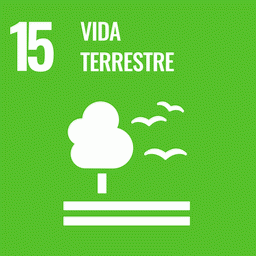Positive aboveground biomass trends have been reported from old-growth forests across the Amazon basin and hypothesized to reflect a large-scale response to exterior forcing. The result could, however, be an artefact due to a sampling bias induced by the nature of forest growth dynamics. Here, we characterize statistically the disturbance process in Amazon old-growth forests as recorded in 135 forest plots of the RAINFOR network up to 2006, and other independent research programmes, and explore the consequences of sampling artefacts using a data-based stochastic simulator. Over the observed range of annual aboveground biomass losses, standard statistical tests show that the distribution of biomass losses through mortality follow an exponential or near-identical Weibull probability distribution and not a power law as assumed by others.
The simulator was parameterized using both an exponential disturbance probability distribution as well as a mixed exponential–power law distribution to account for potential large-scale blowdown events. In both cases, sampling biases turn out to be too small to explain the gains detected by the extended RAINFOR plot network. This result lends further support to the notion that currently observed biomass gains for intact forests across the Amazon are actually occurring over large scales at the current time, presumably as a response to climate change.
